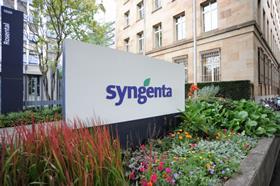
At Fruit Logistica 2019, Fruitnet sat down with Arend Schot of Syngenta to get an overview of the vegetable seed division's plans for 2019, and the lo-down on the products that are set to excite consumers.
How was 2018 for Syngenta Vegetable Seeds, and what is on the horizon product-wise for the coming year?
Arend Schot: I think 2018 was a really good year for us. It was the second full year that we had a completely dedicated vegetable seed business and we brought quite a lot of new products to the market. These are all interesting in different ways but the most important thing is that they have a positive impact on the value chain.
We have introduced several important products, but the stand-out is the Yoom tomato variety. It looks fantastic and unique, being a deep purple colour, and it fits in with the consumers’ quest for a healthy lifestyle. Yoom contains a large volume of anthocyanins, which have active properties to help fight chronic conditions such as diabetes and high blood pressure. Yoom also meets value chain demand for reliability, consistency and capability to reach the retail stage in excellent condition.
When developing new products, is taste the priority?
AS: The most important trait is taste, above all other considerations. However, if you look back ten years or so, you needed to make a lot of choices between, for example, taste, shelf-life and colour. Nowadays, with the use of modern technology, it is much easier to combine different traits to get the desired result.
For example, we are launching a range of sweet pepper varieties that tick many boxes, with very good eating quality, extremely high yields but also high levels of resistance to things like nematode, whitefly and mildew. In these times you can make a stronger combination of the traits you want.
So you are not just catering to one link in the value chain, but to every link?
AS: This is one of the key messages we want to get across. Yes, we are here for the growers, but also the retailers, the distributors, the consumers. We want to explain how our product fits into each step of the value chain. When we set out our aims five, even ten years ago, we were often forced to focus on one area, one link in the chain. Now we can take everything into account.
A good example of this is our new Destinica cauliflower, which is a super-white variety that has two big advantages in the field. Firstly the grower doesn’t need to cover the plant because it stays white even with moisture and sunlight, and secondly it is extremely uniform which means during harvesting you can take almost 100 per cent of the heads at once. But, it also has advantages for the consumer as well, in that it is a fantastic looking bright white product that stays white even after cooking.
This improved efficiency sounds far more sustainable, is that correct?
AS: A lot of these traits fit nicely into the idea of being more sustainable. This is also an important factor for Syngenta – how can we be more sustainable. The Destinica, for example, creates less waste, almost zero per cent in fact. We also have our new Easy-Broq broccoli variety, where you eat the stem itself – again minimising waste. These varieties producing higher yields result in more efficient and sustainable use of farm inputs and resources, such as land water, nutrients and labour.



